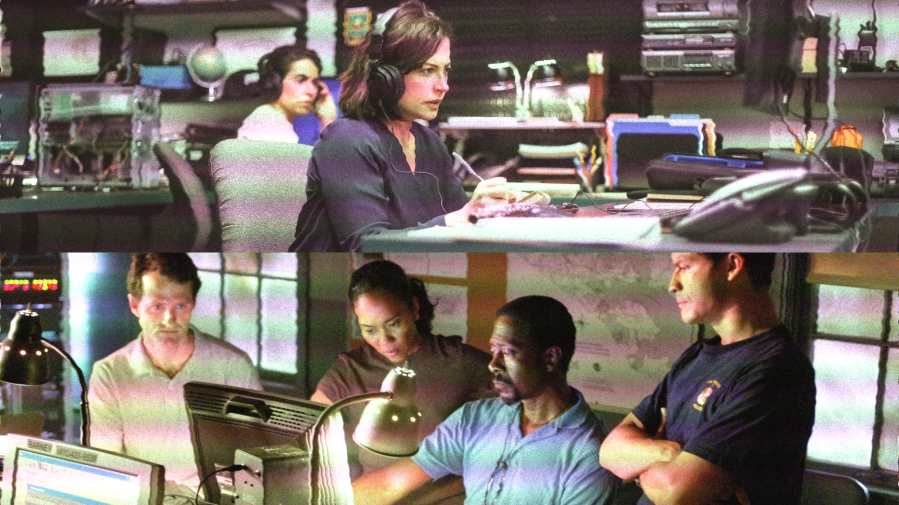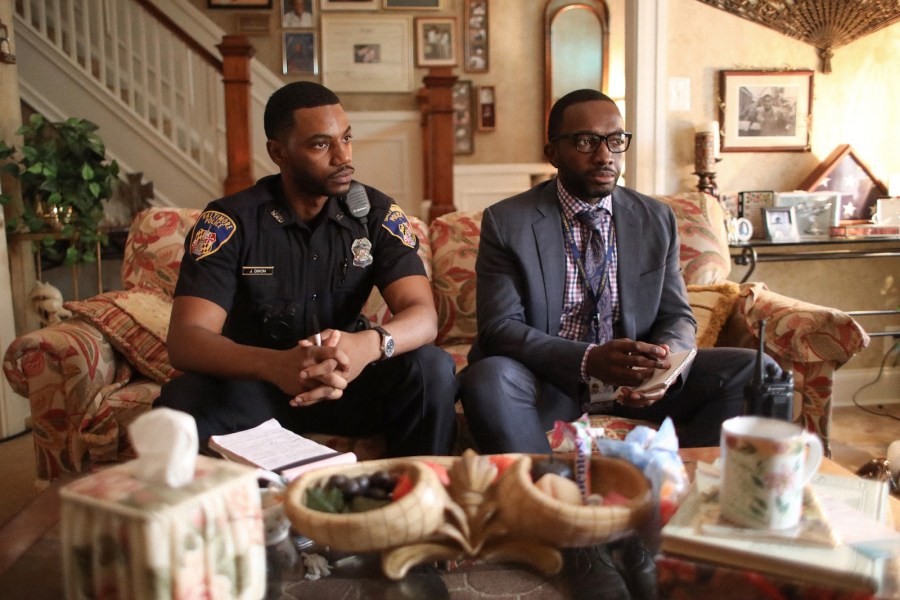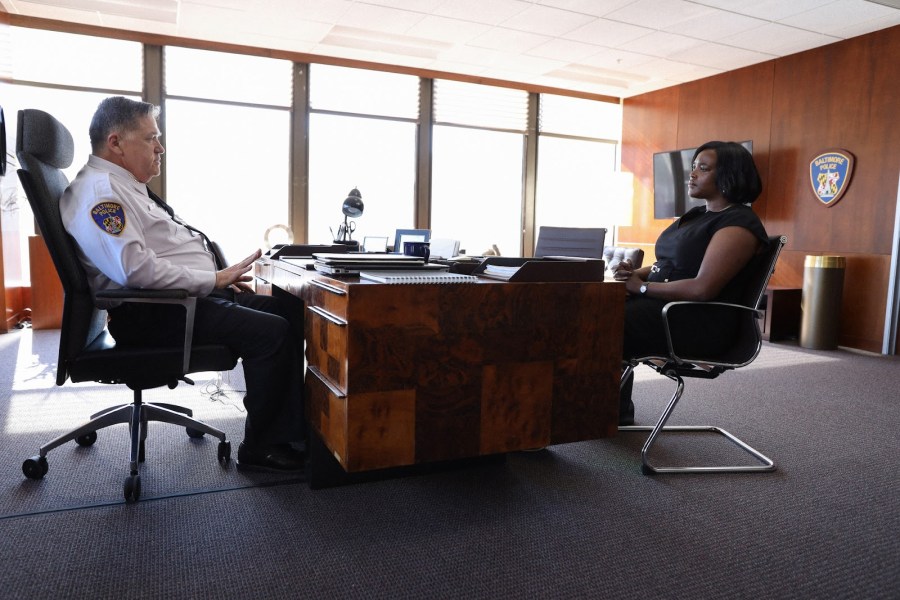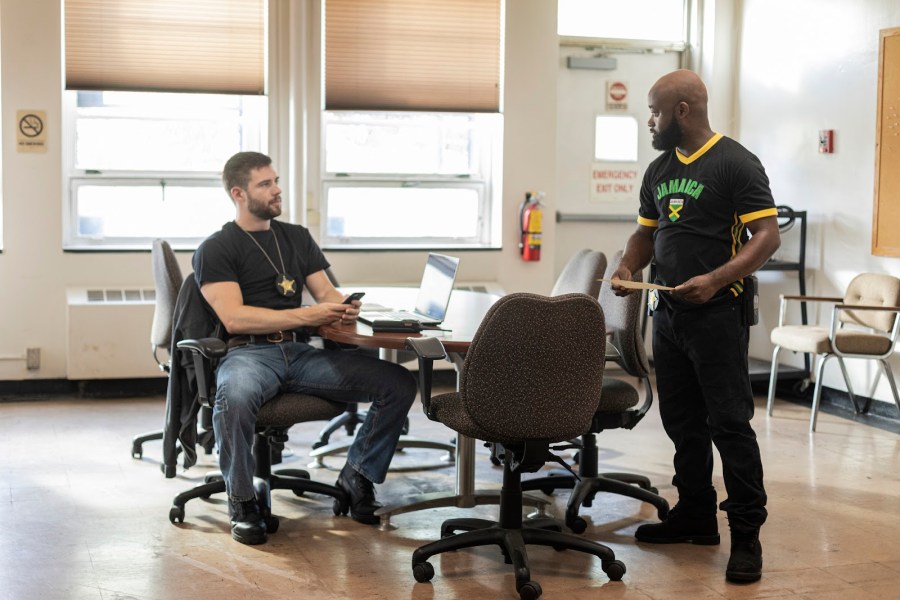How To Change Quality On Hbo Go

I won't blame y'all if you mistake the 6-episode limited series We Own This City, debuting on HBO this Mon, April 25, for a spin-off of The Wire (2002–2008). Both shows share a lot of DNA.
They're both set in Baltimore and accept the city's police department at its center. The Wire's creator David Simon writes and executive produces this show with longtime collaborator and The Wire's writer and producer George Pelecanos.
Plus there are a lot of faces from The Wire who show up in We Ain This City. Jamie Hector, a.k.a. Marlo Stanfield in The Wire, plays Homicide Detective Sean Suiter. Darrell Britt-Gibson — he was Marlo'south arrangement member O-Domestic dog — plays decadent cop Jemell Rayam. Domenick Lombardozzi, The Wire'southward Herc, is the Wedlock President of the Baltimore Police Department (BPD). Trey Chaney, a.k.a. Poot from the Barksdale system, plays a detective from a nearby county. Delaney Williams, the Homicide Sergeant Jay Landsman in The Wire, is Baltimore Law Commissioner Kevin Davis in We Own This City. And you'll as well be able to recognize — although some of them have gone from kid actors to adults — Jermaine Crawford, Anwan Glover, Chris Clanton, Nathan Corbett, Maria Broom, Susan Rome and Michael Salconi.
The new show is not completely made upwardly of The Wire's alums though. Amidst the new faces are Jon Bernthal, who plays the corrupt cop Wayne Jenkins; Josh Charles as the Baltimore cop (with a lot of brutality complaints against him), Daniel Hersl; Dagmara Domińczyk and Don Harvey as FBI agents; David Corenswet as a police detective from a neighboring section; and Wunmi Mosaku, who plays an chaser from the Justice Department's Function of Civil Rights bent on trying to write a written report well-nigh police abuse in Baltimore. Similar The Wire, this is very much an ensemble story. Reinaldo Marcus Greenish (King Richard) directs all six episodes of the show and is also an executive producer.
Where the Thematic Differences Between The Wire and We Own This City Commencement

"The police officers who nosotros're writing most now, they weren't police officers in 2007 when we wrote the last pages of The Wire," said Simon during a virtual press briefing in front of the Television Critics Association (TCA) when discussing the differences between the shows. "You're effectively looking at the side by side generation of what drug warring and mass arrest and a complete failure of policy did to the Baltimore Department."
Fifty-fifty if it was grounded in reality and written by journalists-turned-screenwriters, The Wire was fiction, whereas We Ain This City is based on a not-fiction book by Baltimore Sun reporter Justin Fenton, which details the Gun Trace Task Forcefulness (GTTF) scandal that was uncovered in 2017. Viii members of the GTTF, which was part of the BPD, were charged with racketeering, extortion and robbery.
"You had officers selling drugs back onto the street, that wasn't happening in 2007. Not remotely. There was abuse. At that place was brutality. There were things that we depicted in The Wire," Simon added most the differences between The Wire and this new show. "In The Wire people like Carver (Seth Gilliam) and Herc (Lombardozzi) and those kinds of characters were existence trained past people who notwithstanding had some remainder sense of what a police department was supposed to be. Now, a generation afterward, the Hercs and the Carvers, they're the supervisors. They're the people who are training the next generation. And information technology'south become more profoundly dysfunctional and dystopian in one or two generations of policing."
We Ain This City tackles the side by side generation of the drug war. A war that, every bit the creators of this show admit, is common to many American cities. Only they decided to set the show in Baltimore specifically because it's where the GTTF scandal happened.
"They [Baltimore] committed over the last 30 years to the drug war, to fighting an aggressive drug prohibition and to mass arrest as a upshot of that drug war. And, as a upshot, it destroyed police work in a lot of primal ways," Simon said. "There'due south an statement that we're making with the show: nosotros have to end the drug state of war. Nosotros accept to take this overlay of warring against the communities that are the nigh vulnerable, that accept the most economic deprivation."
"We have to accept that and discard it considering it's not solving annihilation," Simon continued. "It's non addressing habit in whatever meaningful or healthy way. All it's doing is filling prisons and leading police away from doing actual constabulary work that cities need, and leading them into doing the kind of police work that just brutalizes and degrades citizens and communities."

"You know all that sh*t they told yous in the Academy near procedure and probable crusade? F*ck that, man! And what are they calling that? Cultural sensitivity preparation they requite you? F*ck that sh*t too. This is Baltimore," Officeholder Ed Barber (David Hammond) tells a rookie Jenkins (Bernthal) in episode ii'south flashback sequence that'due south prepare in 2003 to show us why Jenkins chose the path he did as a BPD officer and how he became involved in the GTTF scandal. Information technology's also a proficient sample of the blazon of policing yous'll see depicted in the prove.
At that place's a lot of back and forth in We Own This City between Jenkins' by in 2003 and 2005 and then the months leading up to his arrest alongside other members of the GTTF. You go to see how the case is built with the collaboration of several agencies, in the aforementioned fashion you did in The Wire. At that place'south fifty-fifty a wire in Nosotros Own This City and the FBI agents who request it need to log pertinent and non-pertinent calls for their investigation, much in the manner Freamon (Clarke Peters) or Prez (Jim True-Frost) did.
What nosotros didn't get with The Wire was this nonlinear narration that jumps dorsum and forth betwixt several timelines. That lack of chronological gild certainly shows Nosotros Own This City is a 2022 show, non a 2002 1.

"Nobody watches our stuff when it's actually on the air," joked Simon during the TCA printing conference, calculation he's happy The Wire ended up finding its way to the legacy information technology has. When it first aired on HBO, its ratings weren't exactly comparable to the contemporary The Sopranos. The Wire would notice its audience after thanks to its availability on DVD and streaming; and it's since been touted as one of the best shows on TV. We'll run into if that delayed viewership also happens for We Own This City or if the audience finds it more than immediately.
And even though this new limited series depicts a more than bleak chapter well-nigh the war on drugs, Simon highlights i of the big revolutions that has taken place since they wrote The Wire: the ubiquity of smartphone cameras. "It used to be whatsoever happened on the street corner came down to my word against yours. Now it's my word confronting whoever happens to accept a camera," he said. "Engineering science has reached the indicate where we now see what bad police piece of work is on a routine footing and in that location'south proof of information technology. And then either police departments are going to effigy out a manner to practice the job right or we're all in trouble."
Do yous feel like reminiscing most The Wire a bit more? Don't miss our conversation with Clarke Peters.
Source: https://www.ask.com/entertainment/we-own-this-city-hbo-the-wire?utm_content=params%3Ao%3D740004%26ad%3DdirN%26qo%3DserpIndex
Posted by: garcialuxual63.blogspot.com

0 Response to "How To Change Quality On Hbo Go"
Post a Comment